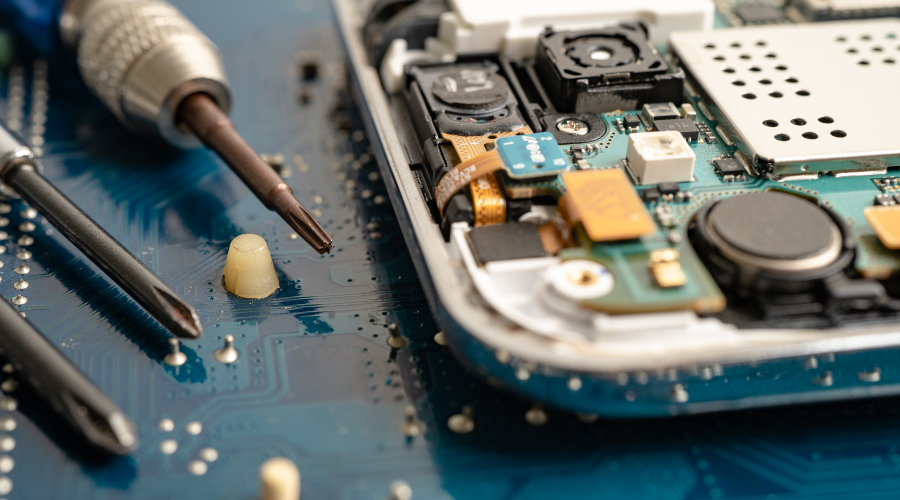1. Introduction
The electronics industry is at the forefront of technological advancement, constantly evolving to meet the demands of consumers and businesses alike. As we move further into the 21st century, several emerging technologies are set to reshape the landscape of the electronics sector. This article explores the top five emerging technologies in the electronics industry, examining their potential impacts, current applications, and future prospects.
2. Overview of the Electronics Industry
The electronics industry encompasses a wide range of products, from consumer electronics like smartphones and laptops to industrial equipment and components. According to a report by Statista, the global consumer electronics market is projected to reach $1.5 trillion by 2025, driven by advancements in technology and increasing consumer demand.
As the industry continues to grow, innovation is crucial for companies to remain competitive. Emerging technologies not only enhance product functionality but also improve efficiency, sustainability, and user experience. The following sections will delve into the top five emerging technologies that are poised to make a significant impact on the electronics industry.
3. Top 5 Emerging Technologies
3.1 Quantum Computing
Quantum computing is one of the most revolutionary technologies on the horizon. Unlike classical computers that use bits to process information, quantum computers utilize qubits, which can represent multiple states simultaneously. This allows quantum computers to perform complex calculations at unprecedented speeds.
Current Applications:
While still in its infancy, quantum computing has applications in various fields, including cryptography, drug discovery, and optimization problems. Companies like IBM and Google are investing heavily in quantum computing research, with IBM’s Quantum Experience platform allowing developers to experiment with quantum algorithms.
Future Prospects:
The potential of quantum computing is immense, with the ability to solve problems that are currently intractable for classical computers. According to a report by McKinsey, quantum computing could create $1 trillion in value across various industries by 2035, making it a technology to watch closely.
3.2 Internet of Things (IoT)
The Internet of Things (IoT) refers to the network of interconnected devices that communicate and share data with each other. IoT technology has gained significant traction in recent years, with applications ranging from smart homes to industrial automation.
Current Applications:
IoT devices are prevalent in consumer electronics, such as smart thermostats, wearables, and home security systems. In industrial settings, IoT sensors monitor equipment performance and optimize supply chain operations. According to Statista, the number of connected IoT devices is expected to reach 30.9 billion by 2025.
Future Prospects:
As IoT technology continues to evolve, its integration into everyday life will deepen. The development of 5G networks will enhance IoT capabilities by providing faster data transfer and lower latency. This will enable real-time applications, such as autonomous vehicles and smart cities, further driving the growth of the IoT ecosystem.
3.3 Artificial Intelligence (AI)
Artificial Intelligence (AI) is transforming the electronics industry by enabling devices to learn, adapt, and make decisions based on data. AI technologies, such as machine learning and natural language processing, are being integrated into various electronic products to enhance functionality and user experience.
Current Applications:
AI is already present in consumer electronics like smartphones, where it powers virtual assistants such as Siri and Google Assistant. In the manufacturing sector, AI algorithms optimize production processes and improve quality control. According to a report by PwC, AI could contribute $15.7 trillion to the global economy by 2030.
Future Prospects:
The future of AI in electronics is promising, with advancements in deep learning and neural networks driving innovation. As AI technology becomes more sophisticated, we can expect to see smarter devices that can predict user preferences, automate tasks, and enhance security features.
3.4 Flexible Electronics
Flexible electronics refer to electronic devices that can bend, stretch, and conform to various shapes. This technology has the potential to revolutionize the design and functionality of electronic products, enabling new applications in wearables, healthcare, and consumer electronics.
Current Applications:
Flexible displays, sensors, and circuits are already being used in products like wearable fitness trackers and smart clothing. Companies like Samsung and LG are developing flexible OLED displays that can be incorporated into various devices, including smartphones and televisions.
Future Prospects:
The market for flexible electronics is expected to grow significantly, with applications in areas such as medical devices, e-textiles, and rollable displays. According to a report by IDTechEx, the flexible electronics market is projected to reach $50 billion by 2027, driven by advancements in materials and manufacturing processes.
3.5 5G Technology
5G technology represents the fifth generation of mobile networks, offering faster data speeds, lower latency, and increased connectivity. This technology is set to have a profound impact on the electronics industry, enabling new applications and enhancing existing services.
Current Applications:
5G networks are already being deployed in various regions, providing enhanced connectivity for smartphones, IoT devices, and autonomous vehicles. The increased bandwidth and reduced latency of 5G allow for real-time data transfer, making it possible to support applications such as augmented reality (AR) and virtual reality (VR).
Future Prospects:
The full potential of 5G technology will be realized as more devices become connected to the network. According to a report by Ericsson, the number of 5G subscriptions is expected to reach 3.5 billion by 2026, driving innovation in sectors such as healthcare, transportation, and entertainment. The widespread adoption of 5G will enable smarter cities, improved telemedicine, and enhanced remote work capabilities.
4. The Impact of Emerging Technologies on the Electronics Industry
The emergence of these technologies is reshaping the electronics industry in several ways:
4.1 Enhanced Product Functionality
Emerging technologies enable the development of smarter, more capable electronic products. AI and IoT integration allows devices to learn from user behavior, resulting in personalized experiences and improved functionality.
4.2 Increased Efficiency and Productivity
Technologies like quantum computing and AI optimize processes and reduce operational costs. In manufacturing, AI-driven automation enhances efficiency, while IoT sensors improve supply chain management.
4.3 Sustainability
Emerging technologies contribute to sustainability efforts within the electronics industry. Flexible electronics can reduce waste by enabling new manufacturing processes, while AI can optimize energy consumption in devices and systems.
4.4 New Business Models
The integration of these technologies is leading to new business models in the electronics sector. For instance, IoT devices enable subscription-based services, while AI-driven analytics provide valuable insights for businesses to enhance their offerings.
5. Challenges in Adopting Emerging Technologies
While the potential of emerging technologies is vast, several challenges must be addressed:
5.1 High Development Costs
The research and development costs associated with emerging technologies can be significant. Companies must invest in skilled personnel, advanced equipment, and infrastructure to leverage these technologies effectively.
5.2 Security Concerns
As devices become more interconnected, security vulnerabilities increase. Protecting sensitive data and ensuring the security of IoT devices is a critical concern for manufacturers and consumers alike.
5.3 Regulatory Hurdles
The rapid pace of technological advancement often outpaces regulatory frameworks. Policymakers must establish guidelines that encourage innovation while ensuring consumer protection and data privacy.
5.4 Skill Gaps
The adoption of emerging technologies requires a skilled workforce capable of managing and implementing these innovations. Companies must invest in training and development to bridge skill gaps and ensure their teams are equipped for the future.
6. Real-Time Statistics on Emerging Technologies
Recent statistics highlight the growth and impact of emerging technologies in the electronics industry:
According to a report by MarketsandMarkets, the global AI market is expected to reach $190.61 billion by 2025, growing at a CAGR of 36.62%.
The flexible electronics market is projected to grow from $29.6 billion in 2022 to $50.0 billion by 2027, according to IDTechEx.
A report by GSMA estimates that 5G technology could contribute $2.2 trillion to the global economy by 2030.
These statistics underscore the transformative potential of emerging technologies in shaping the future of the electronics industry.
7. Conclusion
The electronics industry is undergoing a significant transformation driven by emerging technologies such as quantum computing, IoT, AI, flexible electronics, and 5G. These innovations are enhancing product functionality, increasing efficiency, and paving the way for new business models.
While challenges remain in adopting these technologies, the potential benefits far outweigh the obstacles. As companies continue to invest in research and development, the future of the electronics industry looks promising. By embracing these emerging technologies, businesses can position themselves for success in an increasingly competitive landscape.
In conclusion, staying informed about emerging technologies and their implications is essential for stakeholders in the electronics industry. As we move forward, the integration of these technologies will shape the future of electronics, driving innovation and creating new opportunities for growth.




